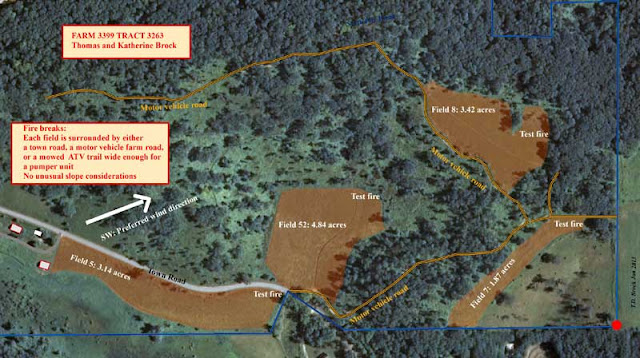I put priorities on the invasive species that we have to worry about. My ratings were the following:
- Eradicate everywhere
- Eradicate in high-quality areas
- Control spread
- Control if time available
- Ignore
The table below contains only those species that we have to worry about at Pleasant Valley Conservancy or Black Earth Rettenmund Prairie. That's why spotted knapweed and crown vetch don't show up, but if we saw even one of those species we would eradicate it.
I apologize for the poor quality of this table. Tables is not Blogger's strong suit. If you have time to fiddle with HTML code you can do a pretty good table, but what you see here is a jpeg that I created from an Excel file.
Not everyone may agree with my ratings, but I suspect most people will.
One could spend a whole seminar discussing the basis for this table. At any rate, it's a good idea to start planning for the summer now.
You will note that not all the species in this table are nonnative. However, even native species can be highly invasive, and take over a natural area if not controlled. Sumac and brambles certainly fall into that category.
Addendum: suggestions for other species
As I noted, the list above is only for species we must deal with at Pleasant Valley Conservancy.
Bill McGillvray, who is a great volunteer at Brooklyn Wildlife Area, sent me the following species that have given him special trouble. I am pasting the substance of his email in here. Thanks, Bill!
- Reed canary grass. I've spent more time battling RCG
than any other. A level 1 plant.
- Burdock. I have this one under control now but it was
a 10 year project. It was widespread and obnoxious when I started.
A level 1 plant
- Dames rocket. It's shows up here regularly but I nuke
it before it seeds out. However west of here in the Brooklyn Wild Area
(BWA) and along the Ice Age Trail it's really established and a lot of us think it's on par with garlic mustard.
A level 1 plant.
- Mullein. Wide spread and aggressive around here.
A level 2 or 3 plant. The DNR planted a large area off Bellbrook Road for a little bluestem seedstock nursury. Sadly they didn't control for mullein and it now looks
like a cactus field.
- Russian Olive. Shows up here regularly but firmly
established in areas in the BWA. A level 1 plant on par with buckthorn.
- Queen Ann's Lace One of my most hated plants.
I give it a 2 or 3.
- Eurasian Thistles. All over around here I give these a
3 or 4
- Multiflora rose. All over around here and seems to be
increasing. A level 2.




